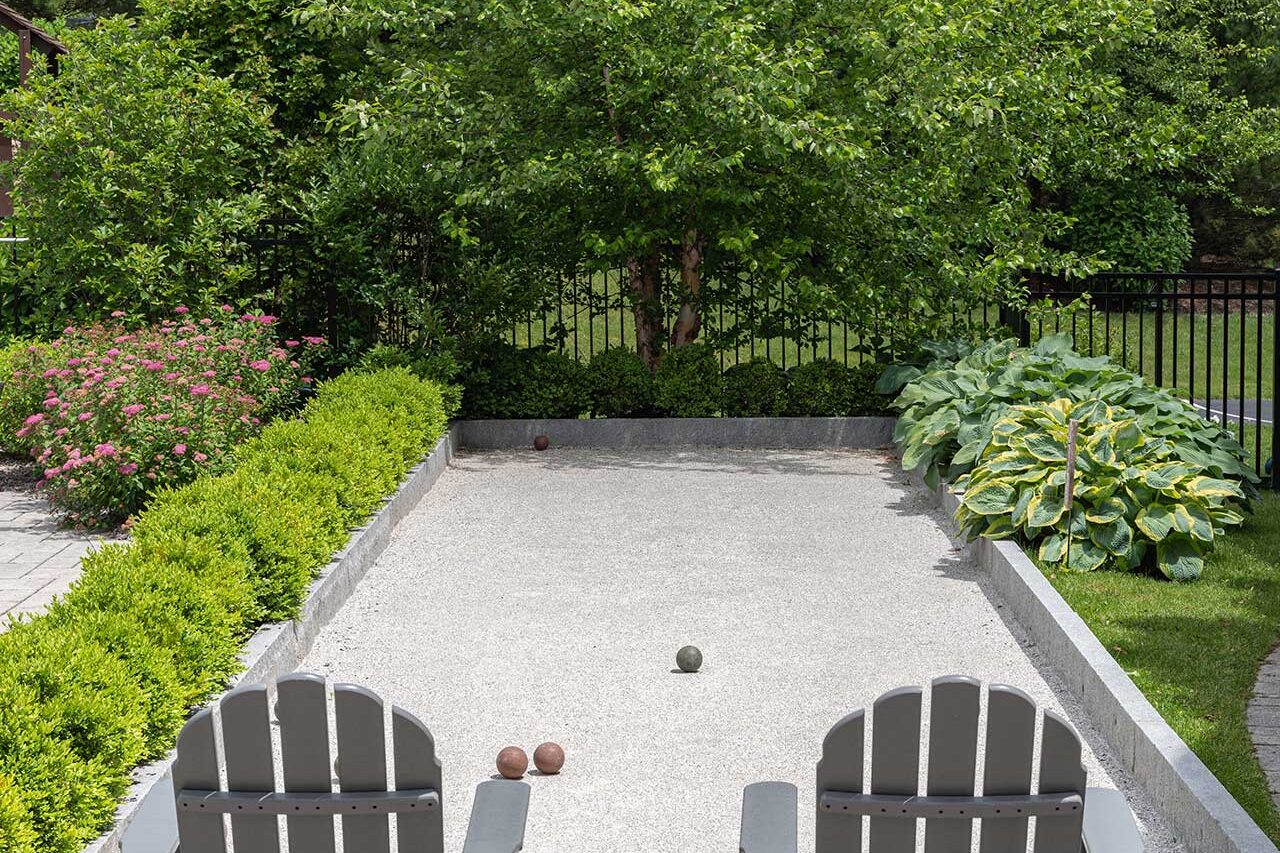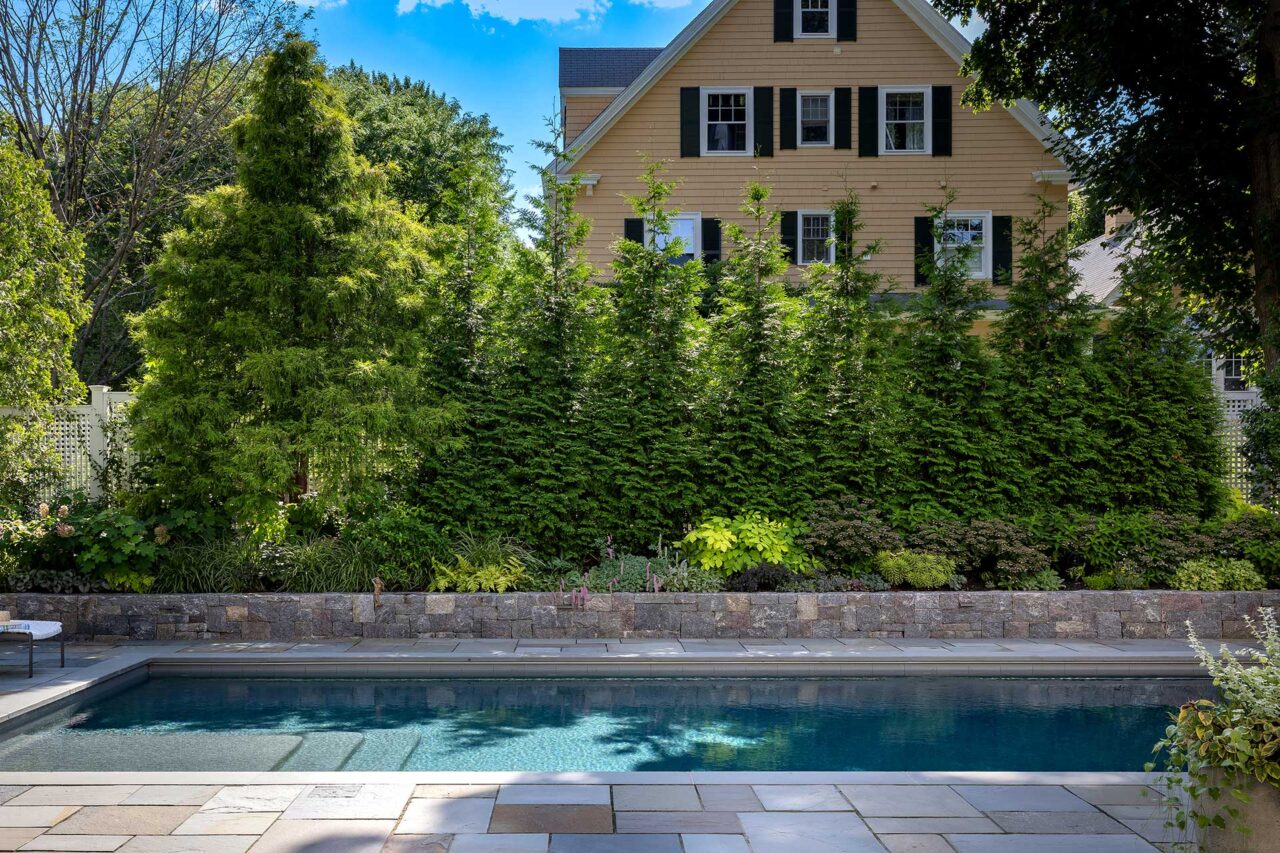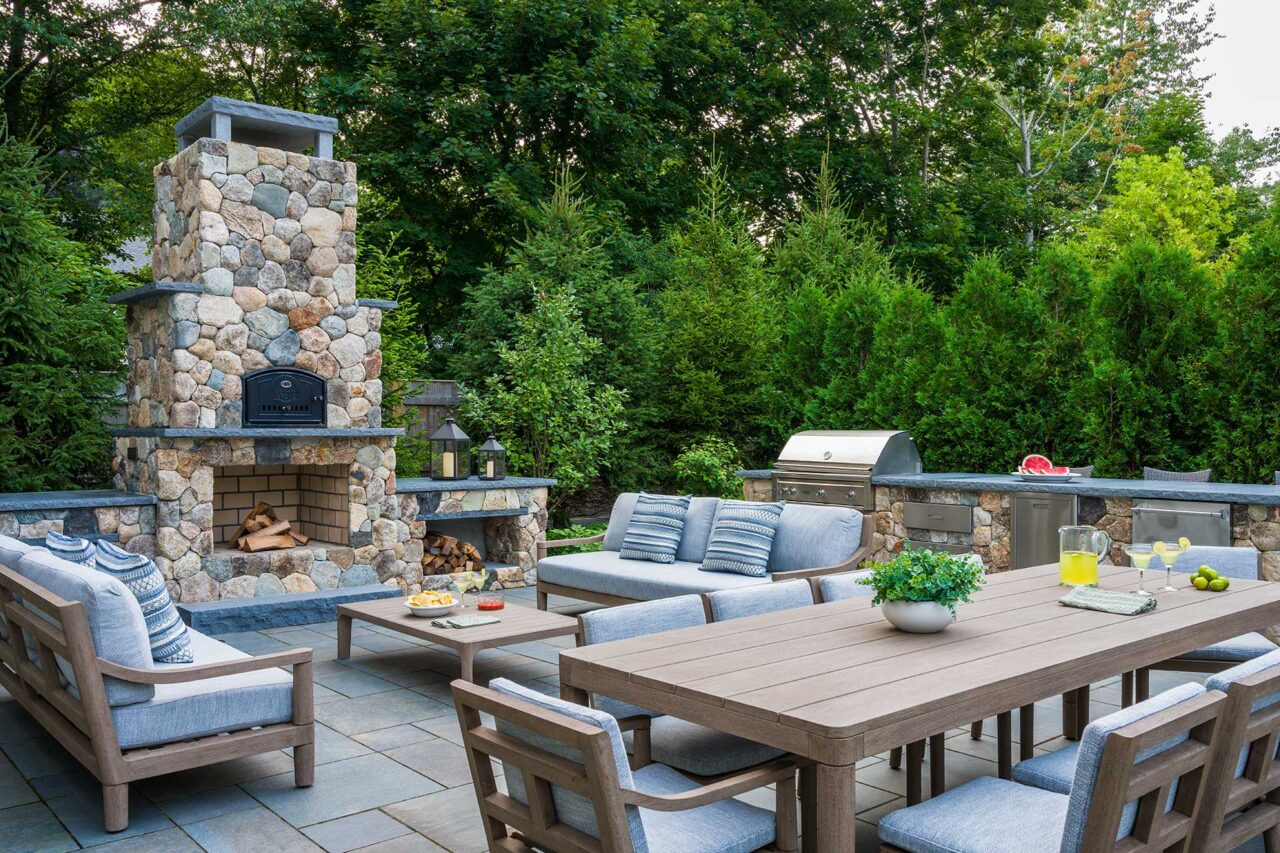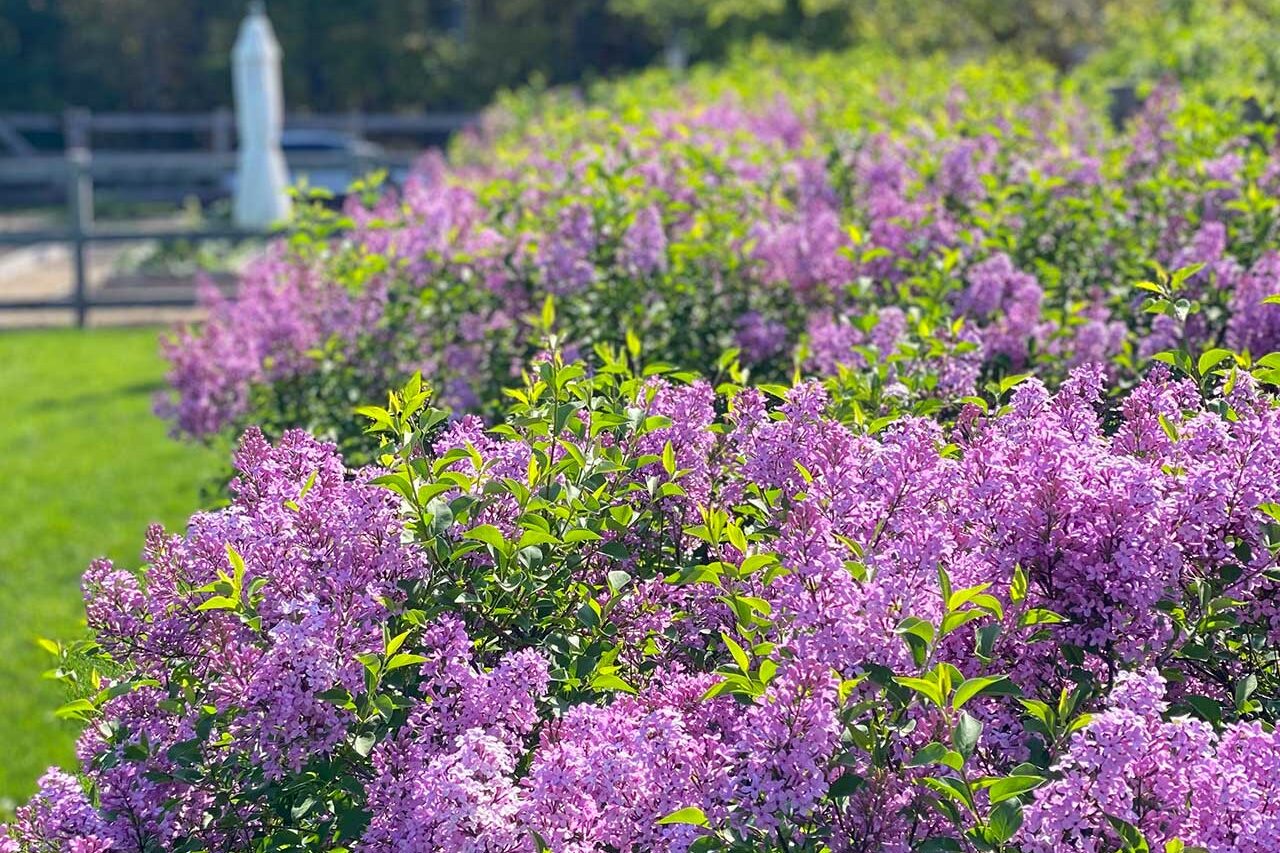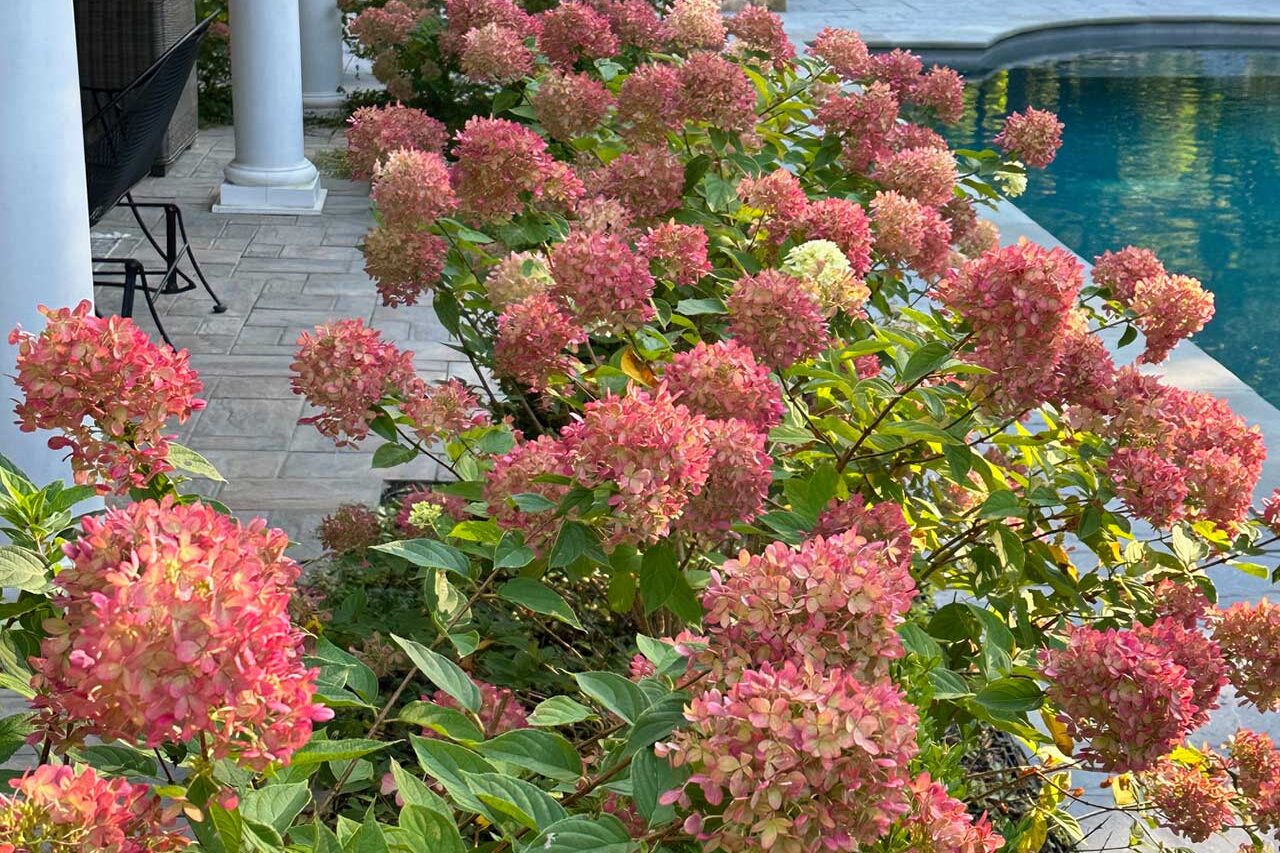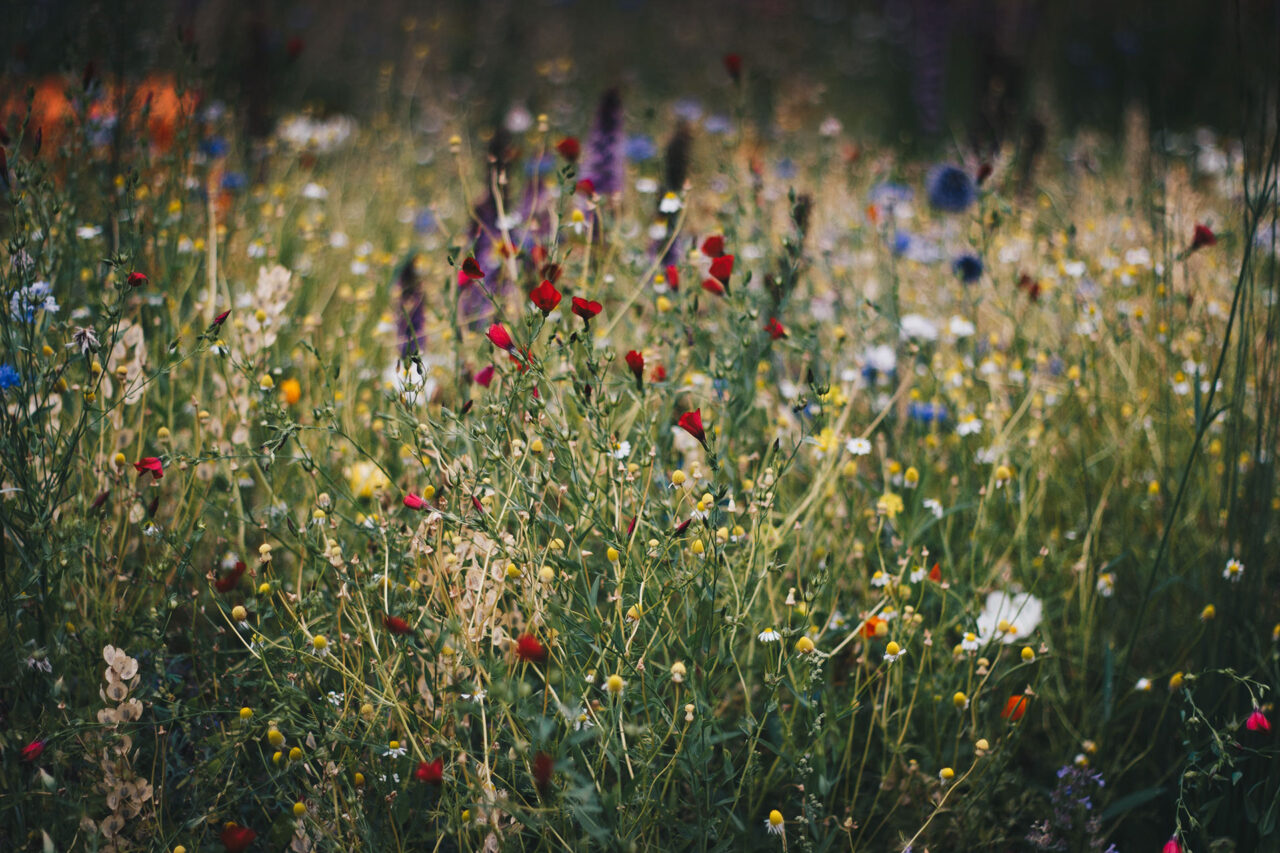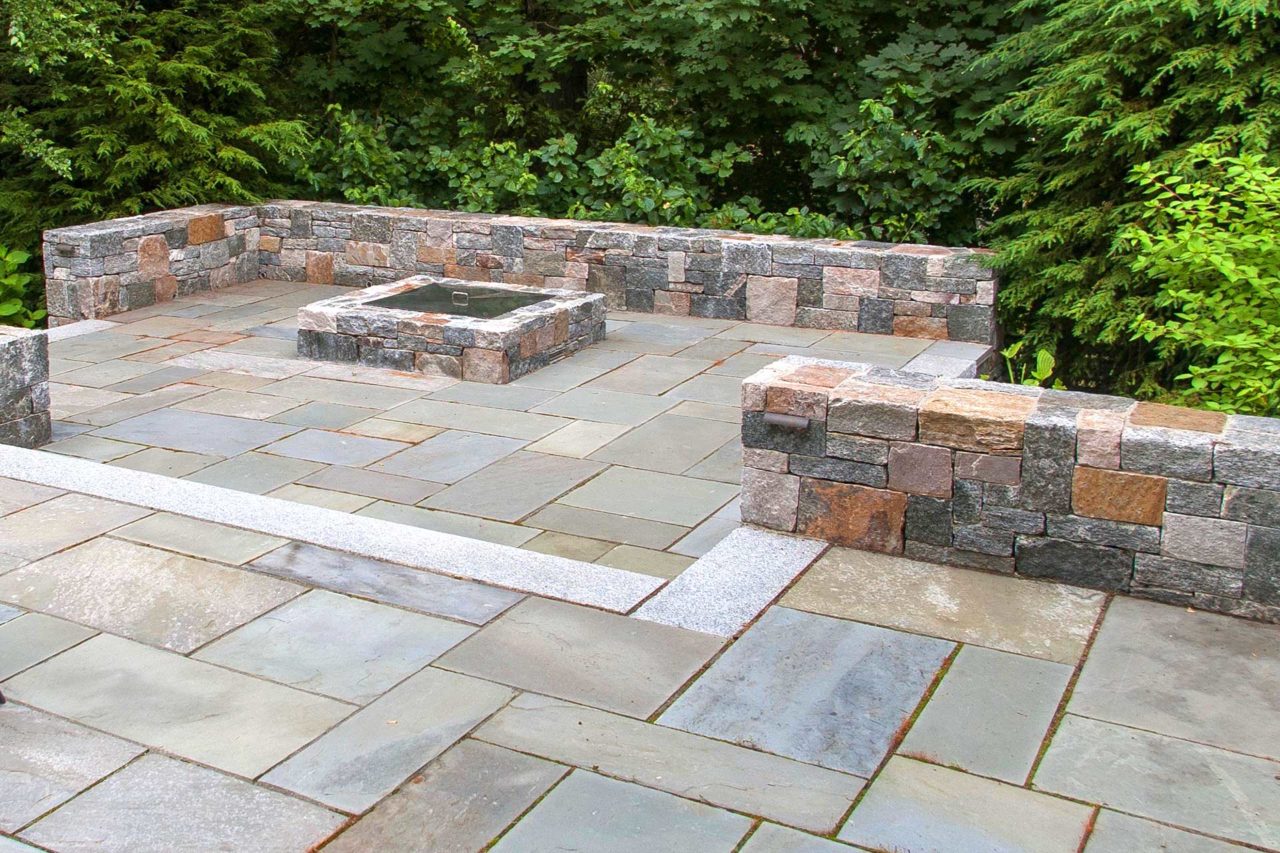Privacy is a top priority for many homeowners, whether you live in a quiet suburb or a spacious rural area. Creating a sense of seclusion in your yard doesn’t have to mean putting up tall fences or sacrificing style. With the right combination of trees, hedges, and other select platings, you can build a natural privacy screen that enhances your landscape while offering peace, quiet, and visual appeal. They create living barriers that soften your surroundings, add visual interest, and increase your home’s value.
Trees and Hedges: Natural Solutions for a Private Outdoor Space
Think of trees and hedges like living curtains for your property. Just as you’d hang drapes to create privacy and style indoors, a thoughtfully arranged screen of greenery does the same for your outdoor space.
And their benefits go beyond blocking views:
- Noise Reduction: Evergreen hedges absorb sound, creating a quieter yard.
- Wind and Sun Control: Trees offer shade and act as windbreaks for patios and gardens.
- Wildlife Habitat: Many privacy plants support birds and pollinators.
- Air Quality Improvement: Trees help filter pollutants and produce oxygen.
Why Investing in Privacy Landscaping Pays Off
Even in neighborhoods with generous lot sizes, most homeowners still want a sense of separation from the outside world. In fact, a 2024 survey found that 65% of homeowners are actively seeking ways to improve privacy in their outdoor spaces—not just in crowded areas, but across all types of residential settings.
Privacy is just one part of the equation. According to the National Association of Realtors, poor landscaping can reduce a home’s value by as much as 30%. In contrast, thoughtfully designed privacy landscaping can increase curb appeal, boost property value, and create a more enjoyable, functional yard.
Best Privacy Plants for Residential Yards
Whether you need a tall tree line for backyard seclusion or a low hedge to block the view from a passing road, here are some of the most effective and attractive plants to consider.
Evergreen Trees for Year-Round Privacy
- Green Giant Arborvitae – Fast-growing and low-maintenance; ideal for large yards or back fences.
- Emerald Green Arborvitae – Compact and narrow, perfect for small or mid-size yards.
- Eastern Red Cedar – Native, hardy, and great for rural or open lots.
- Japanese Cedar – Elegant form with dense, soft needles; useful as a tall screen.
- Leyland Cypress – Tall, fast-growing, and suitable for long property borders.
Evergreen and Semi-Evergreen Hedges
- Boxwood – Classic formal hedge; slow-growing and easy to shape.
- American or Japanese Holly – Glossy leaves, evergreen foliage, and red berries in winter.
- Privet – Popular for fast-growing privacy hedges; needs regular pruning.
- Photinia (Red Tip) – Evergreen with striking red new growth; ideal for informal hedges.
- Viburnum – Many species are evergreen in warmer climates; adds seasonal flowers and fragrance.
Flowering and Seasonal Options
- Rose of Sharon – Tall flowering shrub with hibiscus-like blooms; perfect for informal screens.
- Lilac – Fragrant spring blooms and dense summer coverage.
- Hydrangea (Paniculata or Arborescens) – Lush flowers in summer, mixes well with evergreens.
- Forsythia – Early spring blooms; great when paired with year-round plants.
Smart Planting Tips for Maximum Privacy
Choosing the right plants is just the start. How you arrange them can make all the difference.
Use Layered Planting – Blend trees, shrubs, and perennials of different heights to build a multi-dimensional, effective privacy screen. This layered approach also makes your yard feel larger and more visually interesting.
Go Beyond Straight Lines – Instead of planting in a rigid row, stagger your plantings in an offset or zigzag pattern. This adds depth and ensures better coverage, especially with fast-growing trees that fill in over time.
Choose a Mix of Evergreen and Deciduous Plants – For year-round privacy, include evergreens that provide constant coverage. Then, layer in deciduous shrubs or trees like lilac or hydrangea for seasonal interest. This combo gives you both winter structure and spring/summer beauty, ensuring your screen never looks bare.
Use Berms and Raised Beds to Elevate Coverage – If your yard is flat or your chosen plants are slow growers, build up the ground with berms (mounded soil) or raised planting beds. This boosts initial height, improves drainage, and helps block views more quickly—especially helpful when starting with smaller plants.
Think Long-Term: Space for Growth – It’s tempting to plant privacy trees close together for instant coverage—but overcrowding can lead to poor airflow, disease, and root competition. Follow the recommended spacing on plant labels. If you want immediate privacy, combine fast-growing fillers like ornamental grasses while your main trees mature.
Plants as Natural Curtains
Just like you wouldn’t install blinds only halfway across a window, your yard deserves full, flexible privacy coverage. Trees and hedges act like adjustable curtains—they can be styled, trimmed, and arranged to suit your space, season, and style preferences.
Frequently Asked Questions
Q: What are the best fast-growing privacy plants?
A: Green Giant Arborvitae, Leyland Cypress, and Privet are popular for their quick growth and dense coverage.
Q: What’s a good option for smaller residential lots?
A: Emerald Green Arborvitae, Japanese Holly, and compact Boxwoods are perfect for narrower yards or near patios.
Q: Do privacy hedges require a lot of care?
A: Some do, like Privet, which needs regular trimming. Others, like Arborvitae or Japanese Cedar, require very little upkeep once established.
Q: Can flowering shrubs be part of a privacy screen?
A: Yes. Combine flowering shrubs like Viburnum, Hydrangea, or Lilac with evergreen hedges for privacy plus seasonal color.
Q: Is it okay to plant near my property line?
A: Generally yes, but always check local guidelines or HOA rules. Be mindful of how close roots or branches may get to fences, walkways, or neighbor property.
Final Thoughts: Grow Your Privacy Naturally
Whether your home is nestled on a large lot or sits in a friendly suburban neighborhood, privacy doesn’t have to come from fences or walls. With the right mix of trees and hedges, you can create a peaceful retreat that’s functional, beautiful, and environmentally friendly.
Privacy landscaping is more than a shield—it’s an invitation to enjoy your outdoor space on your own terms.
Want to Learn More?
Explore these trusted resources for deeper guidance:
- Using Trees and Shrubs for Privacy and Wind Screening – Penn State Extension – A comprehensive overview of plant types and landscape placement
- How to Plant a Privacy Hedge – This Old House – Detailed step-by-step planting instructions
- Top 15 Privacy Trees – Garden Design – Great visual guide to trees suited for privacy landscaping
